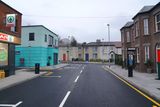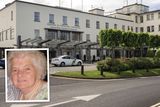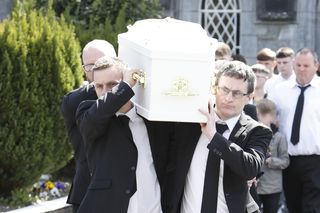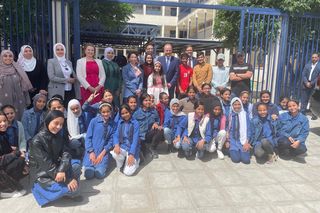to the waters and the wild
Time to go a-ramblin' like John Synge and Jack B
There's a fair chance that, in the Budget aftermath, some rethinking of holidays will take place and that the flight from Ireland will be curtailed for many on economic grounds. The tug of the sun will still exercise its compelling enticement; but the family purse may suggest another course.
One is suggested to me by the centenary publication of John Synge's Travels in Wicklow, West Kerry and Connemara (Serif Books, Stg£9.99, foreword by Paddy Woodworth and illustrations by Jack Yeats). The title, when it first appeared, did not include the word "travels" and travel was not the first thought in the playwright's mind when he wrote the pieces that make up this book. Indeed, the book itself was not in Synge's mind as his short life came to an end in a painful death as a result of Hodgkin's Disease 100 years ago.
Part of it, dealing with Connemara, was written in 1905. In that year, at the request of the editor of the Manchester Guardian, Synge embarked on a summer task, which was to write about the Congested Districts, as they were called, stretching from Gorumna, in the south to the wilds of North Mayo, around Black Sod Bay and Belmullet.
He was accompanied by Jack Yeats. Both men had been commissioned, Yeats negotiating for himself a slightly better financial deal for his drawings than Synge did for his words -- a part of the arrangement that Synge rather resented -- but not to the point that it led to any disaffection.
In fact, both of them, who at heart were solitary individuals, came together happily. They tramped through rain and shine, on lonely roads, in the bogs and the islands around Gorumna and across the great wild bare landscapes of Mayo.
They visited the scene of the race on the strand that is central to Synge's Playboy and drank in the pub that was to be the play's setting. The races are still run today and the pub is there, as indeed are descendants of the people Synge depicted.
Yeats thought highly of his companion and they worked well together. He said of Synge: "He was the best companion for a roadway anyone could have, always ready and always the same; a bold walker, up hill and down dale, in the hot sun and the pelting rain . . .
"I think the Irish peasant had all his heart. He loved them in the east as well as he loved them in the west . . . Synge was by spirit equipped for the roads. Though his health was often bad, he had beating under his ribs a brave heart that carried him over rough tracks. He gathered about him very little gear, and cared nothing for comfort except, perhaps, that of a good turf fire. He was, though young in years, 'an old dog for a hard road and not a young pup for a towpath'."
Yeats wrote these words in 1911 and the essay was published by Cuala Press. It is reprinted at the end of the new centenary edition.
Yeats also experienced Synge's taste for the eccentric and bizarre, not in the people one expects to be eccentric and bizarre, but in the people they met in their travels on the roads. "He loved mad scenes," Yeats wrote in the essay. "He told me how once at the fair at Tralee he saw an old tinker-woman taken by the police, and she was struggling with them in the centre of the fair; when suddenly, as if her garments were held together by one cord, she hurled every thread of clothing from her, ran down the street and screamed, 'Let this be the barrack yard', which was perfectly understood by the crowd as suggesting that the police strip and beat their prisoners when they get them shut in, in the barrack yard."
The friendship was of brief duration. Synge worked at theatre in Wicklow and Dublin; Yeats returned to Devon.
Synge's writing about the other places in this patch-up of a posthumous book derived from different situations. The first and perhaps best section is about Wicklow. He knew his own county best and spent more time collecting stories there than he did in the West of Ireland. As was the case with The Playboy of the Western World, the stories found in Wicklow and written about in these pages relate, often directly, to episodes in the plays that are set in Wicklow.
Kerry brought out a different attitude in Synge. He retained there the watchful, personal view of life. There was less of the professional observation that gives rigour to the Connemara articles done with Jack Yeats. Had he lived, he might well have extended his writing to cover Cork and Donegal. He was, after all, living under the same spell of rural observation that had made the novels and stories of Somerville and Ross so popular.
Much more of all this than might be imagined is available to those who walk the countryside in any of these places. It is not possible to use the main highways but this may be a benefit. The old coach road, from Arklow to Bray, which Synge knew well, is only there in part. A highway not usable by walkers, has replaced it. But the roads left over are tracks full of natural wonder and beauty.
He writes compassionately of the vagrants he knew. "In the middle classes the gifted son of a family is always the poorest -- usually a writer or artist with no sense for speculation -- and in a family of peasants, where the average comfort is just over penury, the gifted son sinks also, and is soon a tramp on the roadside".
Celebrating the centenary of such a truthful, uncompromising man, who looked reality in the face always and turned disablement and human frailty into wonderful theatre, is a worthwhile occupation for these times.
His end was sad. He and Yeats were kindred spirits, and shared a view of Ireland and knew how to express it. But it was another figure from that group, George Moore, who drew one of the most perceptive portraits of the man, and associated Synge's approach with that of Jack.
"As I write this line I can see Synge, whom I shall never see again with my physical eyes, sitting thick and straight in my arm-chair, his large, uncouth head, and flat, ashen-coloured face with two brown eyes looking at me, not unsympathetically ... The conversation about us is of literature, but he looks as bored as Jack Yeats does in the National Gallery. Synge and Jack Yeats are like each other in this, neither take the slightest interest in anything except life."
barnold@independent.ie
Join the Irish Independent WhatsApp channel
Stay up to date with all the latest news














